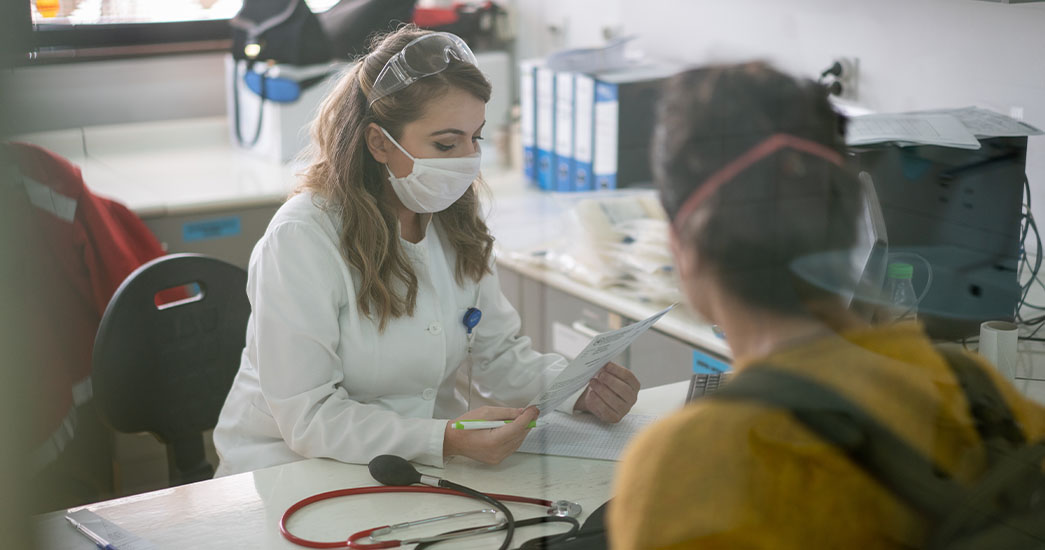
Published October 2020
The pandemic has revealed that our hospitals aren’t prepared for large influxes of patients—turning many unconventional areas like public parks, convention centers and even parking lots into medical facilities. This rush to develop spaces to accommodate COVID-19 patients has spurred discussion around what medical facilities will look like in a post-pandemic world.
Hospital design issues are not limited to lack of space for sudden surges in patients, however. The nature of this rapidly spreading pandemic has brought to light issues around safety and hygiene in hospitals, as staff work to provide the best possible care while limiting their own exposure to illness.
 More spatial flexibility
More spatial flexibility
Recognizing that COVID-19 and future public health crises may be a lasting factor in health care, many hospitals are implementing design changes that will better accommodate the needs of patients and hospital staff moving forward. At Baystate Medical Center in Springfield, MA, an in-house engineering team installed glass doors to allow health care professionals to look in on patients and reduce their own exposure. Many hospitals are also considering how they might design their spaces in the future to allow for extra beds and temporary space to accommodate a surge in patients.
 Safety design improvements
Safety design improvements
In addition to expanding spaces to accommodate more patients, many hospitals are working to lower the chance of exposure for health care workers by reducing contact with high-touch surfaces. Some examples of newer safety features include swapping out light switches and traditional thermostats for no-touch lighting and temperature controls and replacing privacy curtains with e-switchable privacy glass.
 Tech enhancing patient experience
Tech enhancing patient experience
Another issue this pandemic has brought to the forefront is patient isolation. Those admitted to the hospital with COVID-19 are unable to see their loved ones as they receive treatment, which can leave patients and their family members feeling scared and alone. Hospitals are looking to change this by incorporating video chat technology into their facilities so patients are still able to communicate with and see their families virtually. This technology can also be used for doctor check-ins.
Learnings from this pandemic could lead to several design changes. From added safety to spatial upgrades, the future of hospital design is moving toward improved quality of care in future public health emergencies.
To confirm eligibility for any programs or services mentioned in this article as it relates to your specific health plan, please reach out to your account executive or HR benefits team. You may also speak to our member services team at (888)-333-4742 or by sending a secure email. And for plan details and other member resources, log in to the member portal.